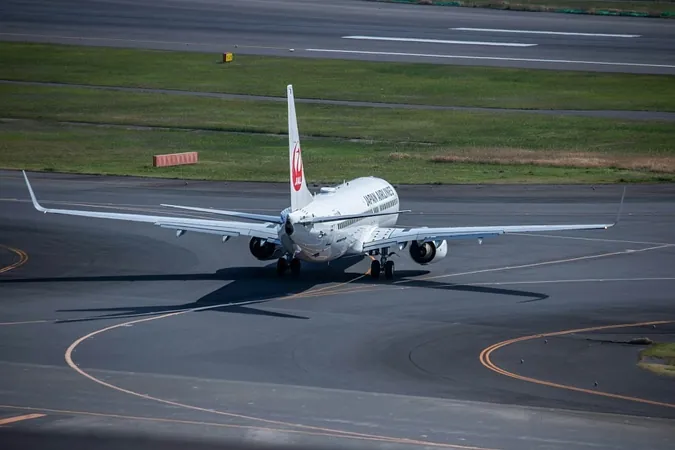
Japan and Singapore Join Forces to Enhance Runway Safety After Tragic Collision
2024-11-18
Author: Wei
SINGAPORE – Introduction of Collaboration
In a significant step towards enhancing runway safety, the civil aviation authorities of Japan and Singapore are collaborating closely following a devastating collision at Tokyo's Haneda Airport earlier this year. The partnership aims to harness cutting-edge technology and improve safety measures to prevent future runway incursions.
Details of the Collision
Following the tragic incident on January 2, 2024, where a Japan Airlines (JAL) passenger jet collided with a Japan Coast Guard aircraft on the runway, both agencies have recognized the urgent need for action. The collision occurred when the coast guard's pilot mistakenly believed he had clearance to enter the runway, leading to a catastrophic outcome that resulted in the loss of five lives aboard the smaller plane, while all passengers and crew of the JAL Airbus A350 managed to escape before it was engulfed in flames.
Strengthening Collaboration
In the wake of this tragedy, the Civil Aviation Authority of Singapore (CAAS) and the Japan Civil Aviation Bureau (JCAB) have agreed to bolster their collaboration efforts. This was highlighted during the recent Singapore-Japan aviation dialogue held on November 14-15 in Kansai, where the leaders of both agencies underscored the importance of working together with airlines, airport operators, ground handlers, and air navigation service providers to ensure comprehensive runway safety strategies are firmly in place.
Ongoing Safety Improvements
The CAAS has revealed that its action plans for Changi and Seletar airports are continually reviewed and improved upon to ensure the effectiveness and currency of risk mitigation strategies. Over the last two decades, Singapore has recorded at least 12 runway incursions at its airports, emphasizing the critical need for stringent safety protocols.
Boosting Air Connectivity
Beyond runway safety, Singapore and Japan are also focusing on boosting air connectivity and improving the punctuality and efficiency of flights between the two nations. Remarkably, the air travel market has rebounded to 89% of pre-COVID-19 levels, with 165 weekly passenger flights operated by seven airlines – an increase from just 70% a year prior. This restoration of air travel is projected to fully recover by 2025.
Innovating in Aviation
Moreover, both CAAS and JCAB are committing to innovate within the aviation sector, addressing sustainability and traffic management challenges, including the adoption of user-preferred routing. This concept allows pilots to select more direct flight paths, contributing to shorter flight durations and lower carbon emissions— a vital aspect in the face of the aviation industry’s push for greener operations.
International Collaboration
Furthermore, Tokyo's Narita Airport has joined the International Aviation Lab, located in Singapore, to assist in addressing operational hurdles affecting airports worldwide. This lab collaborates with several institutions including Singapore’s University of Technology and Design, CAAS, Changi Airport Group, and Singapore Airlines, demonstrating a unified approach to tackle global aviation challenges.
Future Prospects
Both aviation authorities recognize their potential influence as major air hubs in the Asia-Pacific region. Their commitment to share expertise and cooperative development not only aims to enhance runway safety but also to prepare for increased air travel demand amidst post-pandemic recovery.
Conclusion
As we look ahead, the collaboration between Japan and Singapore exemplifies how nations can work together to foster safety, efficiency, and growth in the aviation industry. Stay tuned for more updates on this important partnership and its implications for travelers worldwide!



 Brasil (PT)
Brasil (PT)
 Canada (EN)
Canada (EN)
 Chile (ES)
Chile (ES)
 España (ES)
España (ES)
 France (FR)
France (FR)
 Hong Kong (EN)
Hong Kong (EN)
 Italia (IT)
Italia (IT)
 日本 (JA)
日本 (JA)
 Magyarország (HU)
Magyarország (HU)
 Norge (NO)
Norge (NO)
 Polska (PL)
Polska (PL)
 Schweiz (DE)
Schweiz (DE)
 Singapore (EN)
Singapore (EN)
 Sverige (SV)
Sverige (SV)
 Suomi (FI)
Suomi (FI)
 Türkiye (TR)
Türkiye (TR)